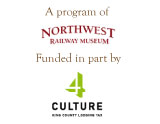
|
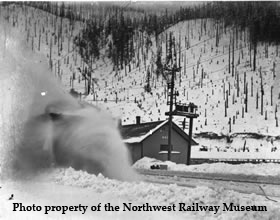
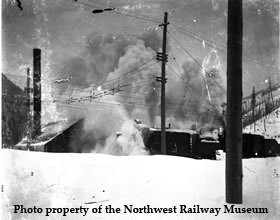
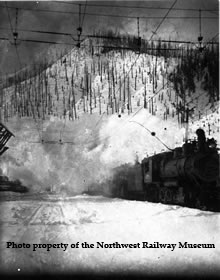

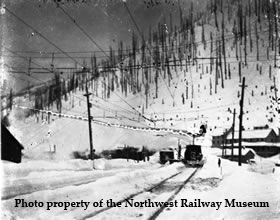
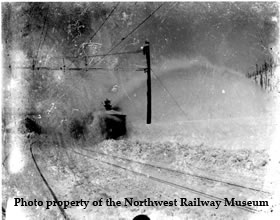

Locomotive and plow crews pose with steam rotary snow plow X-808. Note the electric locomotives on the next track behind the plow.
During exceptionally heavy snow, it was common to couple a rotary to each end of a locomotive - sometimes two locomotives coupled back to back - to ensure that snow the blocked the line behind the clearing effort could be cleared too.